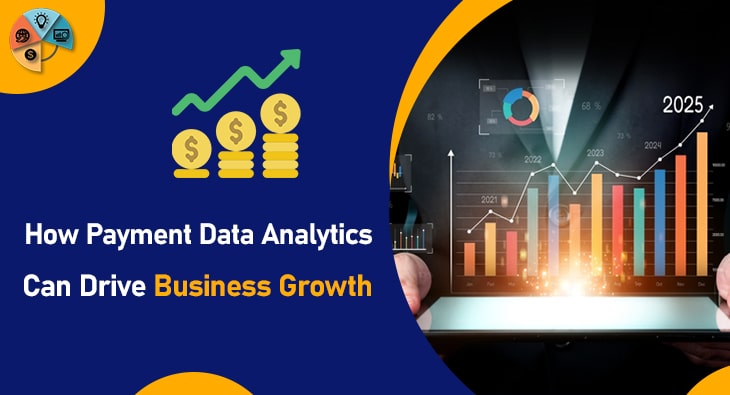In today’s competitive marketplace, understanding the nuances of customer behavior is crucial for driving business growth. Payment data analytics offers a powerful tool for organizations looking to harness the wealth of information embedded in transaction data.
By analyzing patterns in payment methods, transaction frequencies, and customer demographics, businesses can gain valuable insights that inform strategic decisions. For instance, identifying trends in preferred payment options can guide product offerings and marketing strategies, ultimately enhancing customer experience and loyalty.
Moreover, businesses can optimize their payment processes, reducing friction and increasing conversion rates. Embracing payment data analytics not only facilitates better decision-making but also positions companies to adapt to changing consumer preferences, ensuring sustained growth in a dynamic economic environment.
As organizations increasingly recognize the potential of data-driven strategies, leveraging payment analytics becomes a vital component in the quest for business growth through payments.
Understanding Payment Data Analytics
Payment data analytics involves the systematic examination of transaction data to extract actionable insights. This practice goes beyond simply tracking sales; it delves into the specifics of payment methods, transaction times, customer locations, and spending patterns.
By leveraging advanced analytical tools and techniques, businesses can identify hidden trends and correlations within their payment data. For example, seasonal spikes in certain payment types may reveal opportunities for targeted promotions or inventory adjustments.
Additionally, payment data analytics can uncover customer preferences for specific payment platforms, such as mobile wallets or credit cards, enabling businesses to cater to those preferences and enhance customer satisfaction.
This analytical approach is not limited to consumer-facing aspects but also extends to backend operations, such as detecting inefficiencies in the payment process or identifying areas prone to fraud. Integrating payment data analytics with other data sources, like social media interactions and purchase history, can provide a comprehensive view of customer behavior, enabling more precise targeting and personalized marketing efforts. As the volume and complexity of payment data continue to grow, mastering the nuances of payment data analytics becomes increasingly essential for businesses aiming to stay competitive and drive sustainable growth.
Some Related Blogs
- Security Best Practices for Payment Processing
- Cryptocurrency as a Payment Option
- The Role of Payment Gateways in E-Commerce Success
- How Payment Processing Fees Affect Small Businesses
Enhancing Customer Experience through Data Insights
Leveraging payment data analytics can significantly enhance customer experience by offering personalized and seamless interactions. By examining transaction data, businesses can identify customer preferences and tailor their offerings accordingly. For instance, if data reveals that a segment of customers frequently uses mobile payments, companies can optimize their mobile payment options and create targeted promotions for mobile users.
Additionally, payment data can reveal spending habits, allowing businesses to offer customized discounts or loyalty programs that resonate with individual customers. This level of personalization not only fosters customer loyalty but also increases the likelihood of repeat business.
Furthermore, analyzing payment data can help streamline the checkout process by identifying and eliminating common pain points, thereby reducing cart abandonment rates. By continuously monitoring and interpreting payment data, businesses can stay agile, responding swiftly to changing consumer behaviors and preferences.
This proactive approach ensures that customers enjoy a smooth, efficient, and satisfying experience every time they interact with the brand.
Optimizing Pricing Strategies with Payment Data
Payment data analytics plays a critical role in fine-tuning pricing strategies to match customer expectations and market conditions. By analyzing transaction data, businesses can identify optimal price points that maximize both sales and profitability.

Insights gleaned from payment data can reveal how different pricing models—such as subscription-based, tiered pricing, or dynamic pricing—affect customer purchasing behavior. For instance, businesses might discover that customers are willing to pay a premium for expedited payment options or that discounts offered during specific times of the year lead to significant spikes in transactions.
Additionally, by examining the relationship between pricing and customer retention, companies can develop strategies that not only attract new customers but also foster long-term loyalty. Payment data can also highlight regional pricing disparities, enabling businesses to adjust their pricing strategies based on geographic demand.
By leveraging these insights, businesses can implement data-driven pricing strategies that align closely with customer preferences and market trends, thereby optimizing revenue streams and gaining a competitive edge.
Reducing Fraud and Enhancing Security
Payment data analytics is a formidable tool for mitigating fraud and bolstering security measures. By closely examining transaction patterns, businesses can detect anomalies that may indicate fraudulent activity. For instance, unusually high transaction volumes from a specific account or frequent small transactions that deviate from typical spending behavior can serve as red flags. Advanced machine learning algorithms can be employed to predict and identify such suspicious activities in real-time, allowing for immediate intervention.
Additionally, payment data analytics can help businesses recognize vulnerabilities within their payment systems, such as weak points susceptible to hacking or data breaches. By addressing these vulnerabilities proactively, companies can enhance their security protocols, safeguarding sensitive customer information.
Integrating payment data with other security measures, like biometric verification and two-factor authentication, further strengthens the overall security framework. This comprehensive approach not only reduces the risk of fraud but also builds customer trust, as clients feel more secure when transacting with a business that demonstrates robust security practices.
![]()
Email us anytime!
Email customer service 24/7
![]()
Call us anytime!
Reach customer care 24/7 at +1 (727) 330-3944


